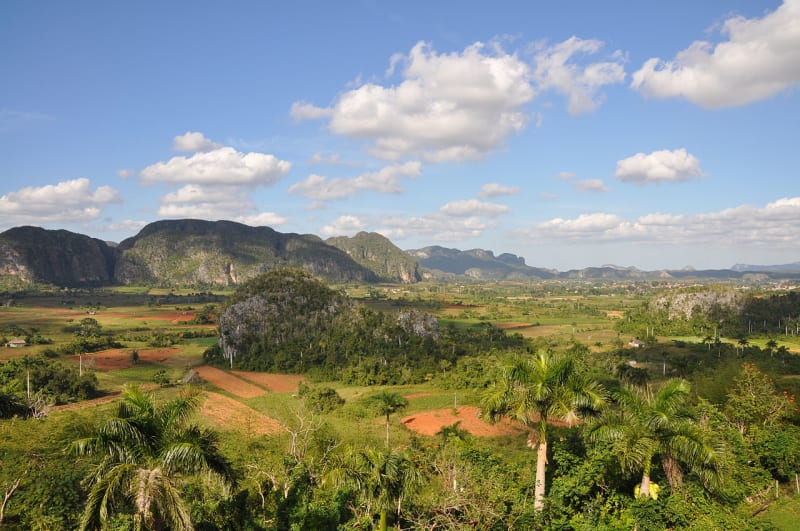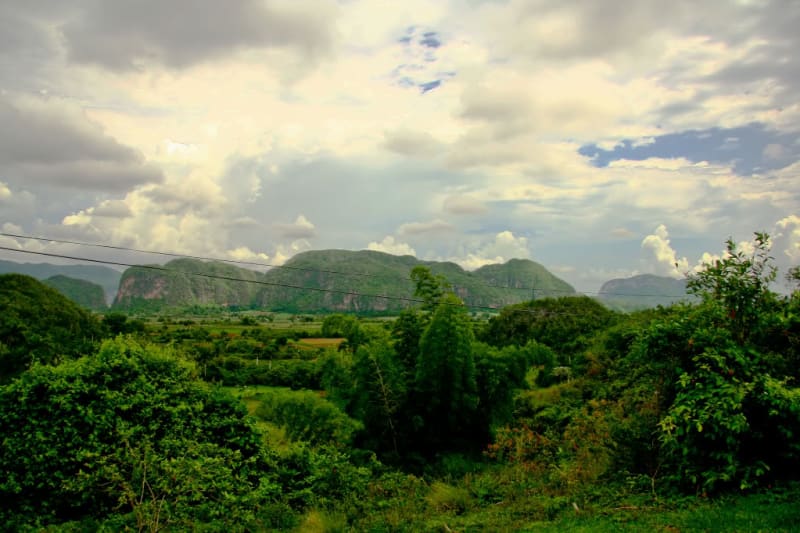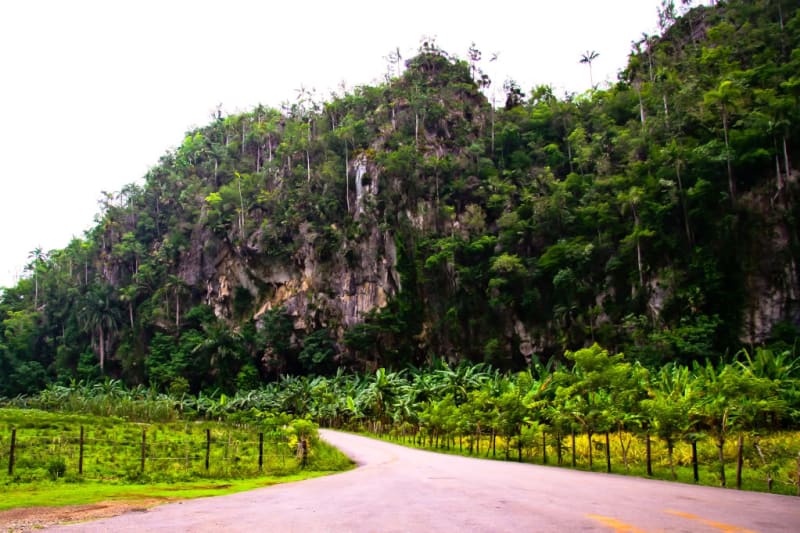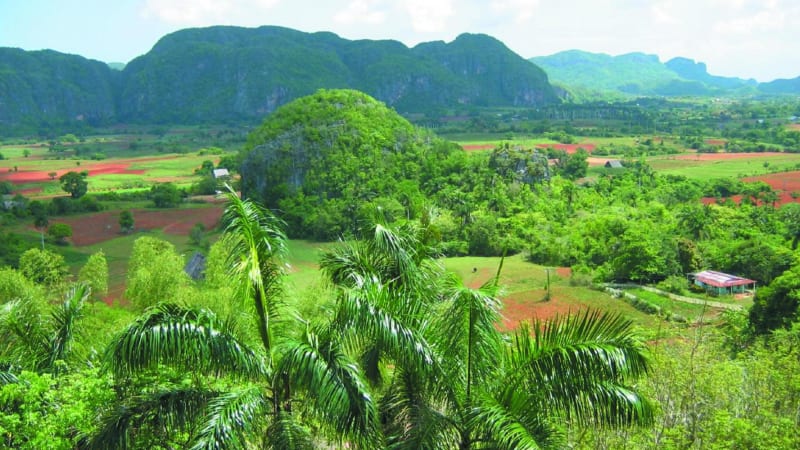Viñales Valley
Vinales Valley is a national park of Cuba, occupying a valley of 132 km2, surrounded by the Sierra de los Organos Mountains. The valley's cultural landscape is listed as a UNESCO World Heritage Site. It is located in the province of Pinar del Rio, making it famous all over the planet. The land is still cultivated for tobacco in traditional ways, and the ancient architecture of farms and villages has been preserved.
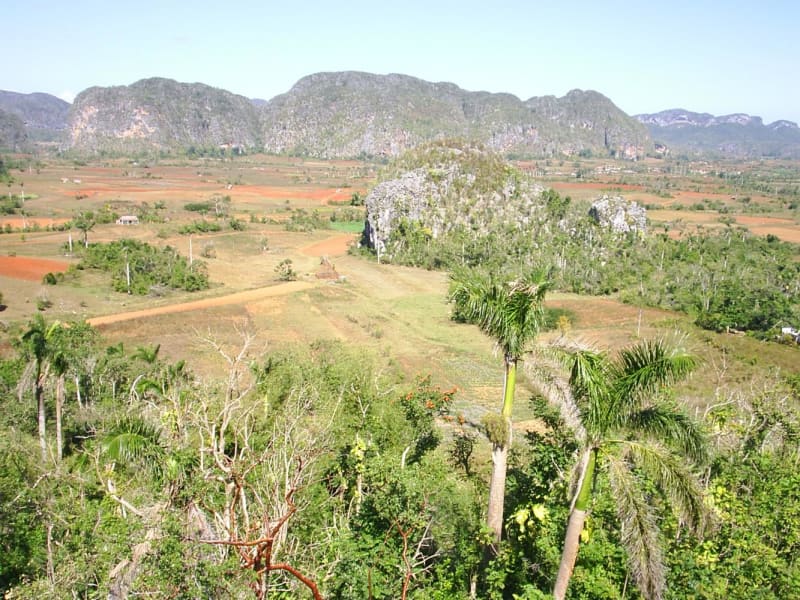
The Vinales Valley is an amazing place, with a rich landscape containing extensive cave systems, mineral springs, prehistoric human settlements, plantations of one of the world's best tobacco plants, as well as rock formations "mogote" up to 400 meters high - locals nicknamed them "elephant backs". All this makes the Vinales Valley an exceptional place that all travelers are eager to visit. These places have a very rich flora, represented by fruit, medicinal, and ornamental plants such as caiman oaks, ceiba trees, and the Mycrocycas calocoma palm, which appeared in the Jurassic period. All the rarest plants found in the valley are collected in the northeast of the valley in the Casa de Caridad Botanical Garden. It is customary for locals to treat travelers with fruits during harvest. The mountains are famous for their caves, the most famous: Santo Tomas, the Cave of the Indian, Jose Miguel. Santo Tomas is the largest in Latin America with a combined length of 45 km. The valley also has Palenque de los Cimarrones, a camp where slaves hid, and a "Prehistoric fresco" painted on a 120-meter-high rock. Ancient animals and people are painted on the fresco.
Tobacco has been grown in the village of Vinales since 1875. Local farmers working in the valley use traditional methods of growing and harvesting tobacco. 70% of Cuba's tobacco is grown here. In a place called La Casa del Veguero, you can watch how tobacco is grown. The staff will briefly tell you how the tobacco is prepared and show you the tobacco dryers where it is stored from February to May.
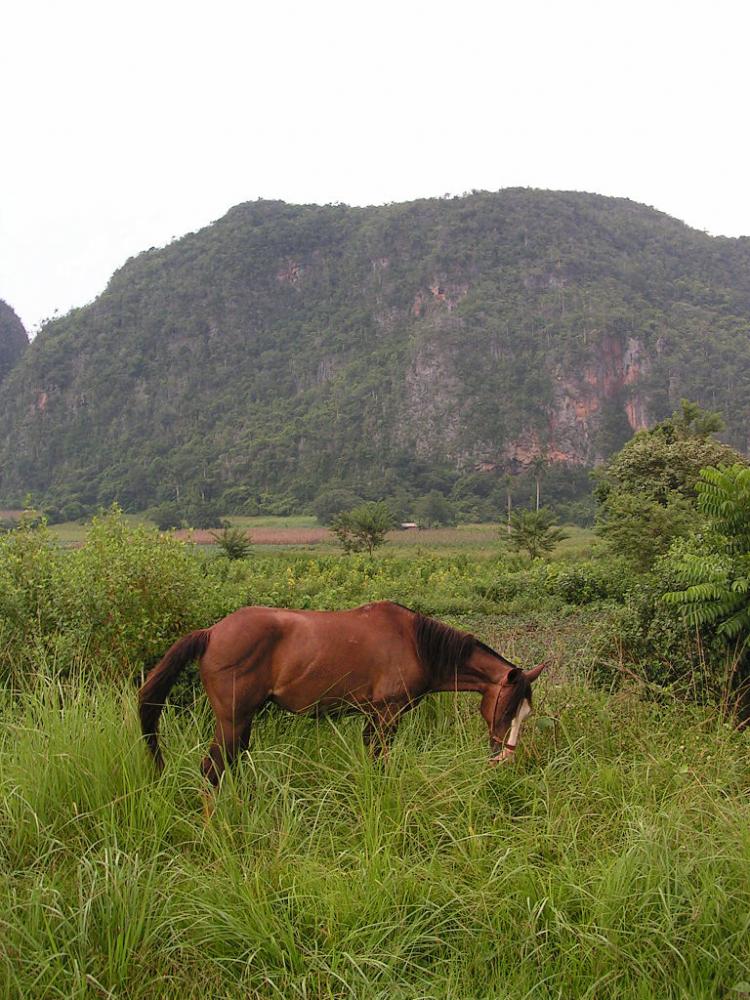
Before the European colonialists arrived here, the Taino tribes lived here. Since about the 1800s, tobacco magnates from the Canary Islands began to sail to the Vinales Valley. The first documented settlement is the ranch of Don Andreas Hernadez Ramos. The city was founded in 1878.
There are 2 seasons in Cuba: the dry season from November to April and the rainy season from May to October. Typhoons sometimes occur in September.
